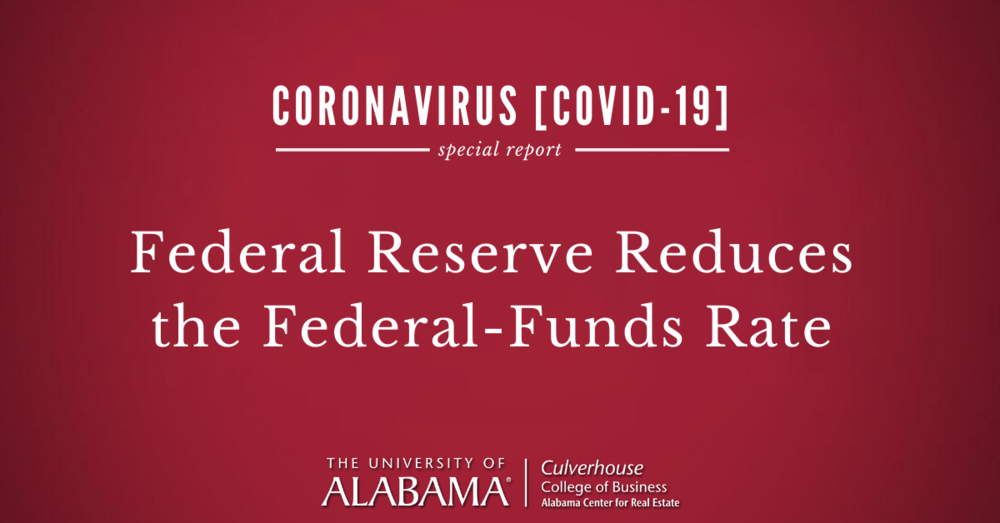On Tuesday, March 3, 2020, the Federal Reserve reduced the federal-funds rate by 50 basis points to a range of 1-1.25%. This was the Fed’s first rate change in between scheduled FOMC meetings since the 2008 financial crisis. Even with the rate cut, major market indexes declined roughly 3% and the yield on the 10-year Treasury dropped below 1% for the first time in history.
The Fed’s decision will help with both the housing affordability equation and stimulating more demand as those in the market for a home are not thinking about the short-term impact of the Coronavirus. The 30-year mortgage hit a historic low of 3.13% after the rate cut decision and rates are settling in just below 3.5% as of Tuesday, March 3, 2020. Mortgage refinance applications are rising on the news of a rate cut.
So what is the catch? The catch is low rates are great for now, but they could reverse in the Spring or late Summer if the virus results in such an economic slowing that we see job layoffs. The psychology can change quickly. The other edge to the sword is that the problem we have had in housing is a lack of supply – not lack of demand. Lower rates stimulate more demand and that means the savings from lower rates may get offset by even stronger home price appreciation and more seek to rush and buy while these rates are at historic lows.
The rate cut will stimulate housing demand which really didn’t need any stimulus. The rate cut is not going to suddenly add more new inventory as it takes 1+ years for builders to respond and put inventory in the ground. Builders are going to be cautious as they don’t see the rates staying this low long-term or when it has new home inventory ready for sale a year from this Spring.
Refinances will definitely go up – and we are already seeing this reaction. If you have a mortgage rate in the 4% plus range, it likely makes sense to refinance. This rate cut has a more stimulative impact on home equity lending where homeowners can borrow really cheap to finally do a home improvement project or use the equity to pay off credit cards or buy a car.
Here is a look at current Lending Tree rates.

Regarding Coronavirus fears, unless you are in a “hot-spot area” like Seattle, WA, home buyers are not going to be dissuaded to meet a broker to see a home and go shopping. Home shopping is not like going through the Atlanta airport (busiest in the world) or gathering at a large public event in a city with Coronavirus victims. Where it has an impact is weeks away when we see if: i) the virus spreads further in the U.S.; ii) companies begin to layoff labor and unemployment ticks up causing a psychological shock to labor and prospective homeowners; and iii) home prices rise more than the interest savings from the rate cut because demand gets overstimulated.
Homeowners, home buyers, and home sellers should take advantage of the rate cut – it won’t be in place long-term and will be extracted when the virus abates in the late Spring or Summer. And if you delay, others will beat you to the market with the limited supply of new home inventory. Across Alabama, we have inventory shortages and home prices rising stronger than the national average. And we have a lot of new labor coming to Alabama looking for housing over the next 2-3 years due to Airbus and WalMart in Mobile, Shipt and tech growth in Birmingham – as well as Amazon and banking growth – and Toyota, Facebook Data Center, etc. in Huntsville. Alabama has a record high number of employed persons at roughly 2.2 million in December 2019 according to the Alabama Department of Labor.
Tuesday’s rate cut by the Fed is like Christmas in March for prospective homebuyers. Rates at these historic lows truly is March Madness. Don’t miss out on this opportunity – especially if you are located in one of the many housing inventory constrained metro areas. Honestly, the housing industry did not need any fuel on the fire from a demand side. We need inventory – especially affordable inventory priced under the $250,000-$300,000 range.





